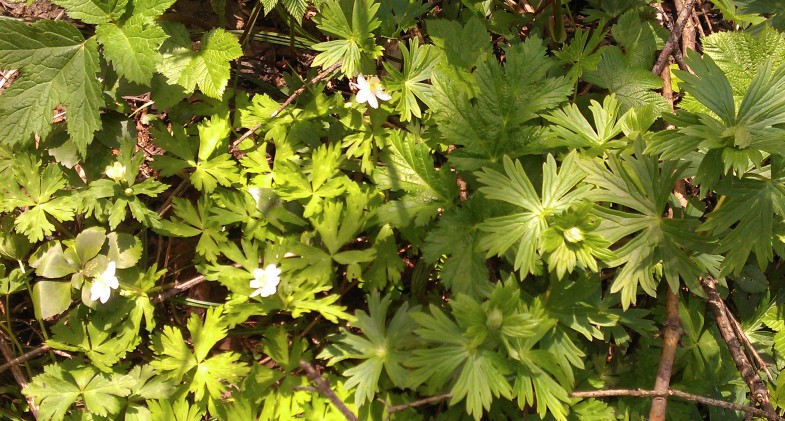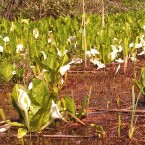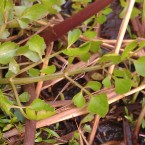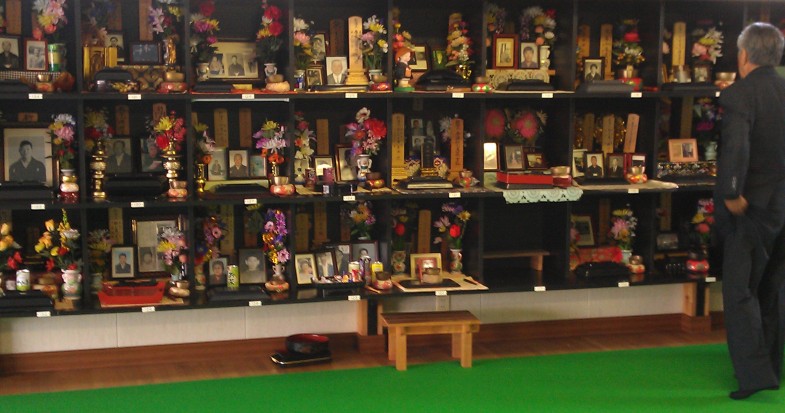
写真は5月1日に撮ったニリンソウとトリカブトのツーショット。mè、なんとも恐ろしげな1枚でもある。ニリンソウは食べられるが、トリカブトは猛毒の代名詞ともいえる植物だからである。
Windflower (left. with little white flower. It is called “Nirin-so” in Japan ) and Aconitum (right. monkshood. It is called “Tori-kabuto” also) are in this picture was taken on May 1th 2012 in Shimokita. “Nirin” means two flowers directly. “so” means weed. “Tori” is a bird . “kabuto” means japanese traditional hat. Both have similar leaves but actually they have opposit charactor in a sense. “Nirin-so” is edible. The other is very famous for its deadly poison.
左の白い、可愛らしい花の方がニリンソウ。右のやや切れ込みが深く、色の少し暗めなのがトリカブト。似ていると言えば似ている。どちらもキンポウゲ科のイチリンソウ属だから当然かも知れない。生育場所もこのように同じところに生えている。トリカブトは既に背が高くなり始めているが、ニリンソウの花が咲く1週間前なら、もっとよく似ていたはずだ。
Both of them are belong to a family of Ranunculaceae, so they are grown in the same place like this. Aconitums (monkshood) are taller than before, although I’m sure they both must be take after each more at one week ago.
毎年トリカブトの毒で、日本でも数人は死ぬ。早春はニリンソウと、初夏の頃にはやはり山菜のシドケイによく間違えられる。どちらか 一つでも、しっかり総合的に覚える方が安全のためには必要だ。トリカブトは花にも、花粉にも、蜂蜜にも毒がある。解毒剤も無い。趣味の養蜂家は気をつけよう。
Some people will be die from poison of Aconitum every year in Japan. It has poison in not only flowers, pollens but also honey ! If you’d like to go into wild feeld and to take wild vegetables, you should better to get correct information.
下北は山菜・山野草の宝庫だ。手つかずの自然がそこにある。道は極めて快適だ。夏の下北は気温20度から25度前後。クーラーなど不要。むしろ寒いほど。さわやかな山野を歩き、トリカブトの濃紺の花の大群生を観るのも悪くない。
Shimokita peninsula is like a paradise for wild flowers and wild vegetables. The weather will be good for driving, trekking etc in summer time. Enjoy for seeing big colonies filled up with deep blue flowers of Aconitums. 2012/5/2


